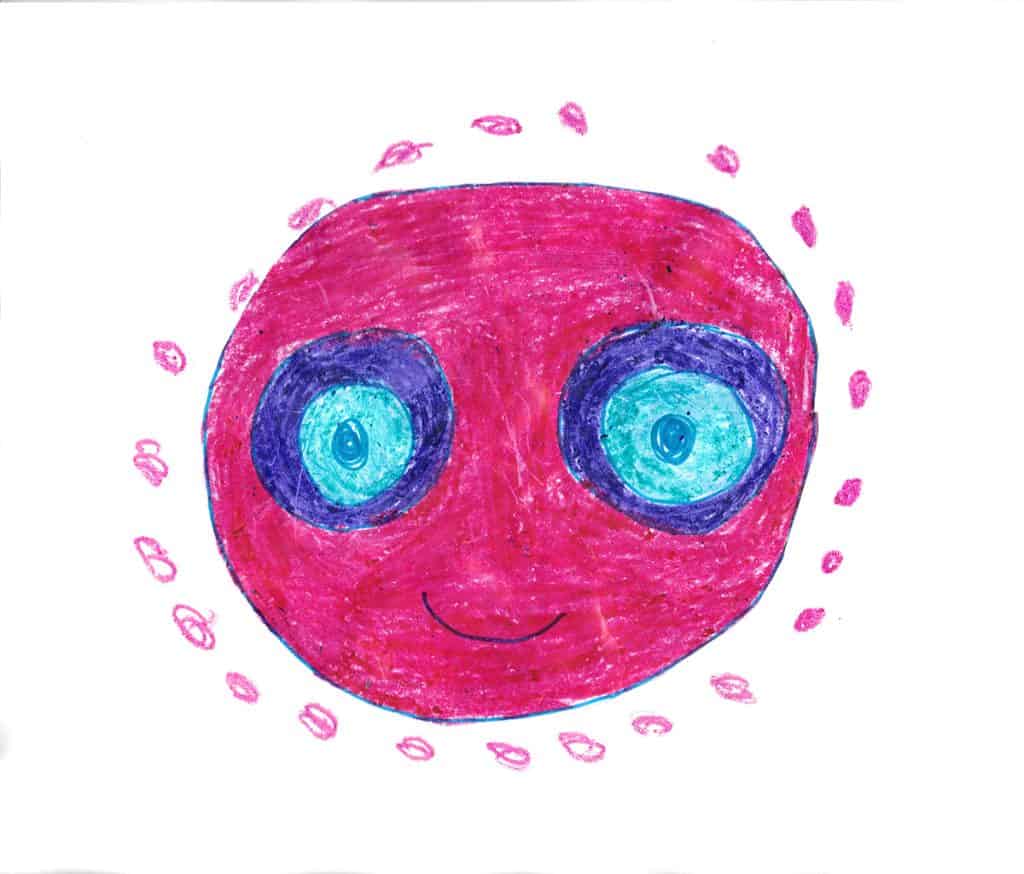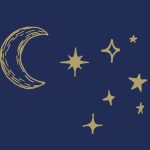Introduction
In this lesson, students explore the cycles and phases of the moon. Students will be “over the moon” for this lesson, as they will be asked to observe the moon over a period of two months, document their observations, and learn the phases of the moon together as a class. The students begin to describe patterns and the moon’s phases throughout the month.
Learning Objectives
- Students will learn about Earth’s moon
- Students will be able to describe the moon’s characteristics
- Students will be able to describe the phases of the moon
Vocabulary
- New Moon
- We cannot see the Moon when it is a new moon.
- Waxing Crescent
- In the Northern Hemisphere, we see the waxing crescent phase as a thin crescent of light on the right.
- First Quarter
- We see the first quarter phase as a half moon.
- Waxing Gibbous
- Waxing means the portion of the moon we see is getting bigger. This phase is between a half moon and full moon.
- Full Moon
- A fully illuminated moon.
- Waning Gibbous
- Waning means the portion of moon we see is getting smaller. The waning gibbous phase is between a half moon and full moon.
- Last/Third Quarter
- We see the third quarter as a half moon, too—but it is the half opposite to the one illuminated in the first quarter.
- Waning Crescent
- In the Northern Hemisphere, we see the waning crescent phase as a thin crescent of light on the left.
- Taqqiq
- The Inuktitut word for “moon” and for “month.”
Reading Activity
Prior to the lesson, students will listen to a story about the moon called “Little Moar and the Moon” by Roselynn Akulukjuk.
“Moar has always loved autumn—playing outside with his friends, feeling the weather get colder—but there is one thing about autumn that really worries Moar. The moon. The days become shorter and the moon, with its creepy face and eerie smile, seems to be looking down on him before he can even get home from school! So, one day, Moar is determined to get home before the moon appears in the sky. But there are so many fun things to do on the way home, he may just run out of time!”
Art Activity

Does the moon really have a face? Have you seen a face on the moon before? In your observation of the moon, check to see if there is a face, then draw the face on your own moon.
Materials
- Paper
- Crayons
- Circular object to trace for shape of the Moon
Bonus: Name your moon
Introduction to Earth’s Moon
To activate prior knowledge, ask students: What planet do we live on? When we look outside, what do we see? What are elements of space that we know? What do we know about the moon?
The Moon in Culture
Learning about space from different cultural perspectives builds and reinforces concepts with children. Once children have heard a story about the moon and share their prior knowledge, share with the students the fact that there are many different stories from different cultures about the moon because the moon is one of the objects almost everyone in the world can see.
The traditional story told by Inuit, “Origin of the Sun and Moon,” is an example of how people around the world thought about elements in space, specifically the moon. This story has been edited to accommodate the age group of this lesson.
Gather the students in a circle or in the storytelling area of the classroom and read out the story, asking the children to use their imaginations to envision the story as there are no images associated.
In a village, an Inuk girl lived in an igloo all by herself. One evening, while the people were assembled in their dancing igloo, a boy went to the girl and blew out her lamp! He was teasing her. After this night. he came to the girl’s igloo every night while the people were in the dancing igloo. He continued to tease her. The girl wanted to know who this boy who kept blowing out her light was. She often asked him “who are you?” but he did not tell his name or utter a sound. Since she was unable to convince him to tell her his name, she resorted to a ruse. One day, after he arrived, she rubbed her fingers across the bottom of one of her pots, and then across the left side of his face. After a while he left her. She followed him to the dancing igloo and heard much laughter coming from inside. She went in, and there she saw that the people were laughing at her own brother, who bore the marks of her fingers on the left side of his face. She was quite upset that her brother was bothering her so much, so she ran away. She took up a piece of wood, such as is used for trimming lamps, and lit it. He ran after her, taking a trimming-stick in his left hand and lighting it. She went out of the dancing igloo and ran around it, chased by her brother. Finally her brother fell down. She looked back and the flame on his stick went out, while hers continued to burn brightly. A gust of wind suddenly came and the sister and brother were wafted up into the sky. As his light had been dimmed, he became the moon, only being lit sometimes, while she became the sun, shedding light and warmth. The brother had been reduced to becoming the moon as a lesson to his teasing and mistreatment of his sister.”
What are the moral lessons in this traditional Inuit story?
- Was the brother showing kindness to his sister?
- Is there a reason the sister became the sun and the brother became the moon? Does it have anything to do with how brightly each of them shone?
- Would you rather be bright and warm like the sun or dimly lit and cold like the moon?
Observation Activity
To understand the phases of the moon better, students will fill out a moon tracking board, individually at home as well as collectively at school.
In this activity they will need:
- PDF chart
- An adult to observe the night sky and the moon with the child
- Crayons
Prior to tracking the moon phases, students will be asked to predict how long it will take for the moon to go from a full moon to a half moon and from a full moon to a new moon. As students track the phases of the moon at home, they will also track collectively at school, filling the chart one day at a time. As the moon enters a new phase, a new term will be introduced. For example, if the moon is already a full moon, the students will learn this phrase, but through observation as the moon shifts phases, students will be asked to describe the moon with guiding questions such as, “does the moon still look full or does it look different?” Based on the students’ responses, the teacher will then introduce a new phrase such as waning gibbous. Continue observation for a period of two months.
Conclusion
Going back to the predictions they made about how long it would take to go from full moon to half moon, or from full moon to new moon, students will see if their predictions were close or off target based on their individual and collective tracking of the moon phases over the period of two months.

